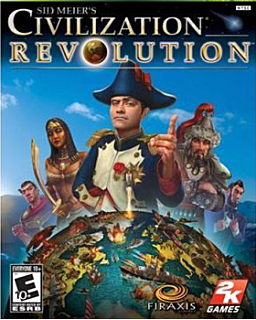In this class we tend to talk about things that relate more to Elementary Education. Don't get me wrong, I still find new things to incorporate in my classroom. For this blog assignment I wanted to get outside of the things we have learned and find something that would interest my high school students, particular in my history classes. Usually any tool you find for history of that age involved a lot of reading simply because of the content. I visited some of my favorite historical landmarks' websites to see if they had anything interesting. Here's what I found.
Mount Vernon is one of my favorite historical places i've visited. The grounds are gorgeous and there is so much history there with the birth of our nation. I would love to be able to take my students there, but it's just not always financial feasible. I started looking at their website and noticed this page.

They have a Teacher Resources section of their website that included Lesson Plans you can use as well as videos you can incorporate into your teaching. They also have a photo/video gallery of things around the estate that I could show the class as I am teaching. They also have a Student Resources section.
I can send my students here for research when they are completing their "This Person In History" project (see lesson plans). This section holds more videos, an interactive "Meet people from the past", and a digital encyclopedia.
After finding these new tools I could use successfully I decided to go look at some of my other favorite historical places' websites. Ford's Theatre has a Virtual Tour that I could pull up to use as a point-of-view when talking about President Lincoln's assassination. The U.S Capitol also has Teacher and Student Resources that I could turn to when discussing the more political aspects of history.
I feel like students would have more fun navigating the sites themselves, and it even may spark an interest for them to go search out more historical websites. The virtual tours would help them visualize things more clearly, as well as the videos. Overall, I think using this tool and technology might help high school students become more interesting in the history of their country.
21st Century Learning and Communicating Tool by Lance Wilkinson:
By "pre-loading" the material to be taught before the lecture, students could gain a general knowledge of the material and ask questions, leaving the class time to be devoted to applying the material, rather than being delivered the material. This application is extremely valuable to all subjects, but as a future History teacher I see enormous potential in the process of receiving and learning material before class to inspire questions, speculation, and debate.
3 Sources I have found to apply this method are:
1) ITunes U
2) Online Websites: Roy Rosenzweig Center for History and New Media, Fordham University's Internet History Sourcebook, and BBC History.
3) Databases (Such as the Alabama Virtual Library - AVL)
ITunes U provides an immense resource for students of any academic discipline. ITunes U allows students to subscribe to Podcasts of areas of study as well as provides Primary and Secondary Sources for humanities subjects. Since most students own an iDevice of some sort, most students could take their classroom material with them to access at any time. ITunes U is full of material that can be incorporated into any curriculum.
The internet provides an immense amount of content, but students need to know how to filter content to get the best sources possible. The teacher as a guide should show students where to access proper source material online first, to give students a good example of what fits good source criteria. From there, students can find their own websites and resources for source material. Being able to filter content is a 21st century skill directly related to the study of History. The Roy Rosenzweig Center for History and New Media is a website that provides an immense amount of content directly related to the field of History. Students can browse everything from broad categories such as surveys of U.S. History and World History, to specific topics such as Women in History, and Events/Time Periods such as The French Revolution. Take a look: http://chnm.gmu.edu/teaching-and-learning/
Fordham University in New York also provides an "Internet Sourcebook" for History Students. Primary Sources from all of History are provided online for research and study. These primary sources will be assigned in class in context of the curriculum and Common Core Standards. In addition, the Primary Sources Fordham University's website provides can be used for Research Papers and Presentations. Fordham University Link: http://www.fordham.edu/Halsall/mod/modsbook.asp
BBC History Online also provides has a less-detailed source catalogue, as well as Historical games and quizzes for areas of interest. BBC History: http://www.bbc.co.uk/history/interactive/games/
Students can also access source material online at The Alabama Virtual Library, or AVL. The AVL provides a secure, academic database for students to use for research.
The internet is an excellent tool for preserving the past, but looking toward the future. Using technology students learn not only to gather information, but to filter information as well. By applying 21st century skills to the classroom, students can engage in research like never before. Having sources directly available via the internet connects students to a world of knowledge no one before our time could imagine.
21st Century Learning and Communicating Tools by Wesley Etheridge:
I've learned about so many new tools in this class that I thought it would be impossible for me to find something new to add to my class, but I was wrong. I will be teaching Social Studies on the high school level so it's very important that the tools I utilize are age appropriate and engaging. After a lot of thinking and research, I've come across numerous technological tools that would be great for a history class. However, there are three that I want to discuss today that really stood out to me:
2) Google Maps
The first tool is probably my favorite tool. In some of my previous blog posts I've discussed how I believe some video games to be a tool that history teachers can use to their advantage. Sid Meier's Civilization video games specialize in historical content. These games are available on the iPad, Computers, and gaming consoles. In my classroom I plan to use the iPad version of this game. The game is a turn-based strategy game series in which you attempt to build an empire to stand the test of time. Students will have the opportunity to become ruler of the world by establishing and leading a civilization from the dawn of man into the space age. They will be able to wage war against other civilizations on the game, conduct diplomacy, discover new technologies for their civilization, go head-to-head with some of history's greatest leaders, and build the most powerful empire the world has ever known. The game's instructions are very clear, and allow anyone over the age of 10 great gameplay. This game would be great to utilize when teaching World History because it allows you the opportunity to play as any of the early world empires. It would give students a better understanding of these early civilizations and would even allow them to see how technological advancements have taken place over time. The game could be a great tool if used properly.
The second tool is one that I never thought about using in my class until I was assigned to Eric Langhorst's blog for C4T's. Eric is a social studies teacher and he has used Google Maps to aid in teaching his 8th graders about geography. Google Maps allows you to learn about the geography of every where in the world. It's truly amazing. I can remember the first time I ever found out about google maps. I would get lost looking at various places all over the world zooming in as close as I could to see what it was like there. Eric Langhorst allowed his 8th grade class to create their own progressive Google Map in his class and I would love to do something like this myself. Each unit the students add locations to their map that are significant to the content they are currently studying.
The final tool I want to share is a website that provides numerous resources for history teachers. History Matters provides teachers with various links, but the thing I like about this website the most is it connects history teachers with other history teachers. This is a great way for me to shape my teaching strategies with other history teacher’s strategies. Also, this tool provides over 1000 links to historical documents, images, and audio interviews that would be beneficial to every history teacher.



Aloha Erin! You and your group did a great job on this post. On your work specifically I love that they had a teacher and student resource pages on their website. Your ideas for employing that technology seemed interesting and unique. That virtual tour in particular sounds fantastic.
ReplyDeleteThe virtual tours are a great idea. Many historic places now have this option which is useful, especially when field trips cost a good bit of money. Opens up possibilities.
ReplyDeleteiTunesU is a great source. I have actually used it for help in courses when I do not understand a topic. Sometimes different professors and textbooks explain it differently. Can also be used for a remediation tool.
History Matters is a great tool to have. Other teachers can be great resources.